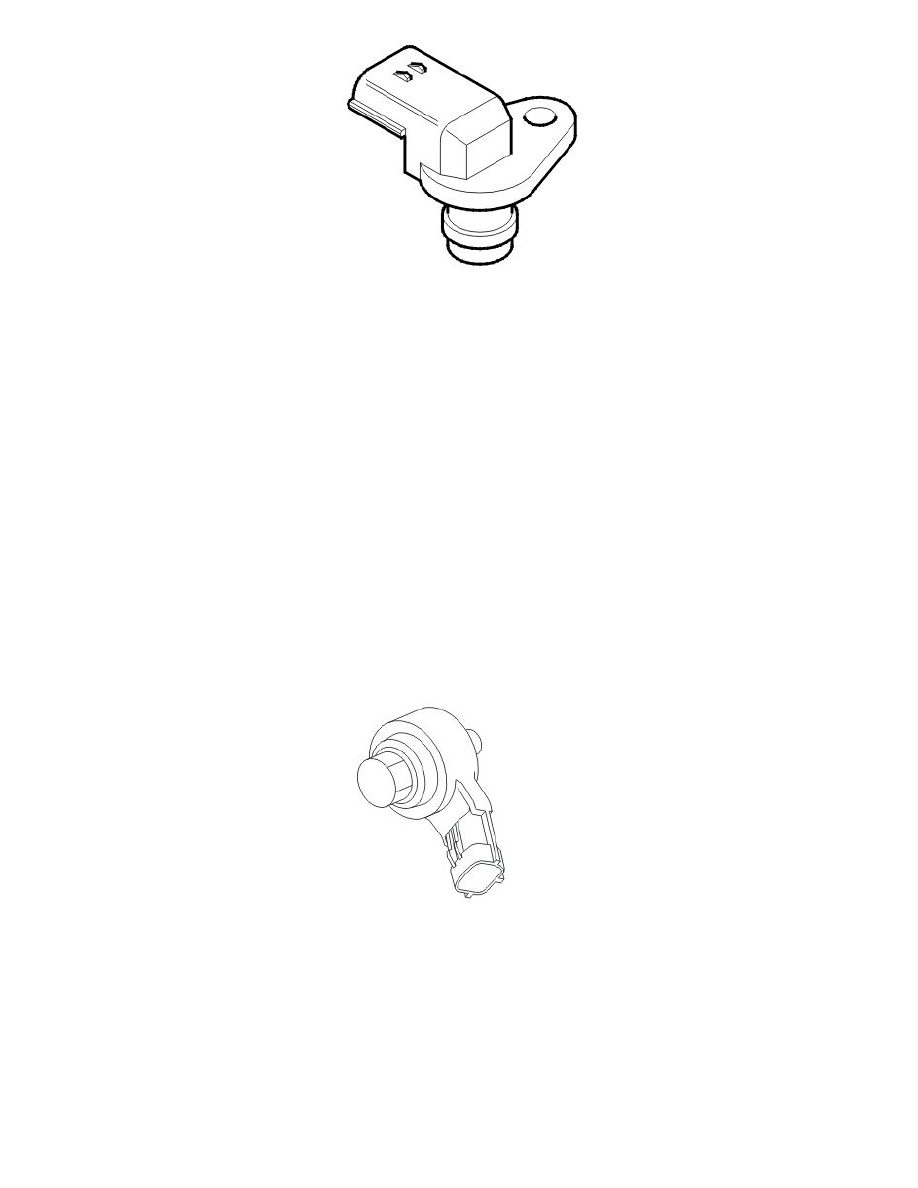V50 L5-2.4L VIN 38 B5244S4 (2006)

The function of the camshaft position (CMP) sensor is to detect the position of the camshaft rotor flanks. The signal from the sensor is used by the
engine control module (ECM) to determine cam timing.
Each camshaft has five flanks per camshaft revolution. Camshaft position sensor (CMP) uses a pulse wheel on the camshaft consisting of five teeth (one
tooth positioned by each flank) to detect the flanks.
The flanks are not symmetric on the camshaft. This allows the control module to determine which flank has been detected and therefore which operating
cycle the camshaft is in.
When the operating cycle of the camshaft is established, the control module is able to determine which cylinder should be ignited. In the event of misfire
or engine knock, the control module is also able to determine which cylinder is misfiring or knocking. See also: Knock sensor (KS) and Engine speed
(RPM) sensor.
Data about the position of the camshaft is used during camshaft control (CVVT). See also: Function See: Description and Operation/Engine Control
Module (ECM)/Function
The sensor, which is a magnetic resistor with a permanent magnet, is grounded in the control module and supplied with 5 V from the control module.
When one of the teeth on the camshaft pulse wheel passes the camshaft position (CMP) sensor, a signal is transmitted to the control module from the
camshaft position (CMP) sensor. The signal varies between 0-5 V and is high when a tooth is in contact with the camshaft position (CMP) sensor and
low when the tooth leaves the camshaft position (CMP) sensor.
Both the intake camshaft and exhaust camshaft have a camshaft position sensor. Cylinder detection on start up (the operating cycle of each cylinder) is
improved by using a camshaft position sensor on the intake camshaft and exhaust camshaft.
The camshaft position (CMP) sensors are located by the camshafts at the rear of the engine.
The engine control module (ECM) can diagnose the camshaft position (CMP) sensors.
Knock sensor (KS)
The function of the knock sensor (KS) is to monitor combustion knocking from the engine. Knocking may damage the engine and reduces the efficiency
of engine combustion.
If the engine control module (ECM) registers knocking from any of the cylinders, the ignition will be retarded for that cylinder at the next combustion
stage. If repeated ignition retardation does not prevent knocking, the injection period will be increased. This has a cooling effect.
The sensor is made up of a Piezo electrical crystal. If there is engine knock, vibrations (sound waves) spread through the cylinder block to the knock
sensor (KS). The resulting mechanical stress in the piezo electrical material in the knock sensors generates a voltage. This signal is transmitted to the
engine control module (ECM). The signal corresponds to the frequency and amplitude of the sound waves. This allows the Engine Control Module
(ECM) to determine if the engine is knocking. The camshaft position (CMP) sensor and engine speed (RPM) sensor are used to determine the operating
cycle of the engine (which cylinder is igniting) and therefore which cylinder is knocking.
The knock sensor (KS) is positioned on the cylinder block below the intake manifold.
The engine control module (ECM) can diagnose the knock sensor (KS).
